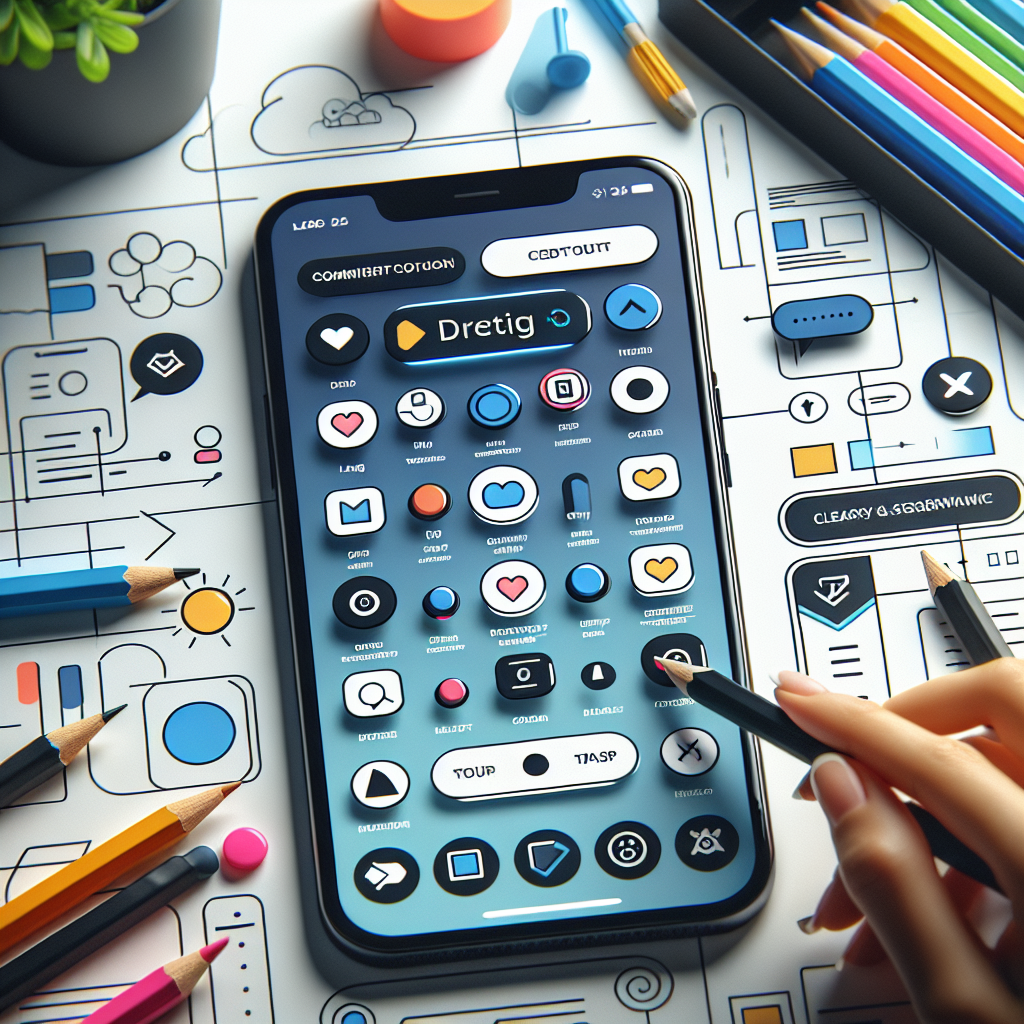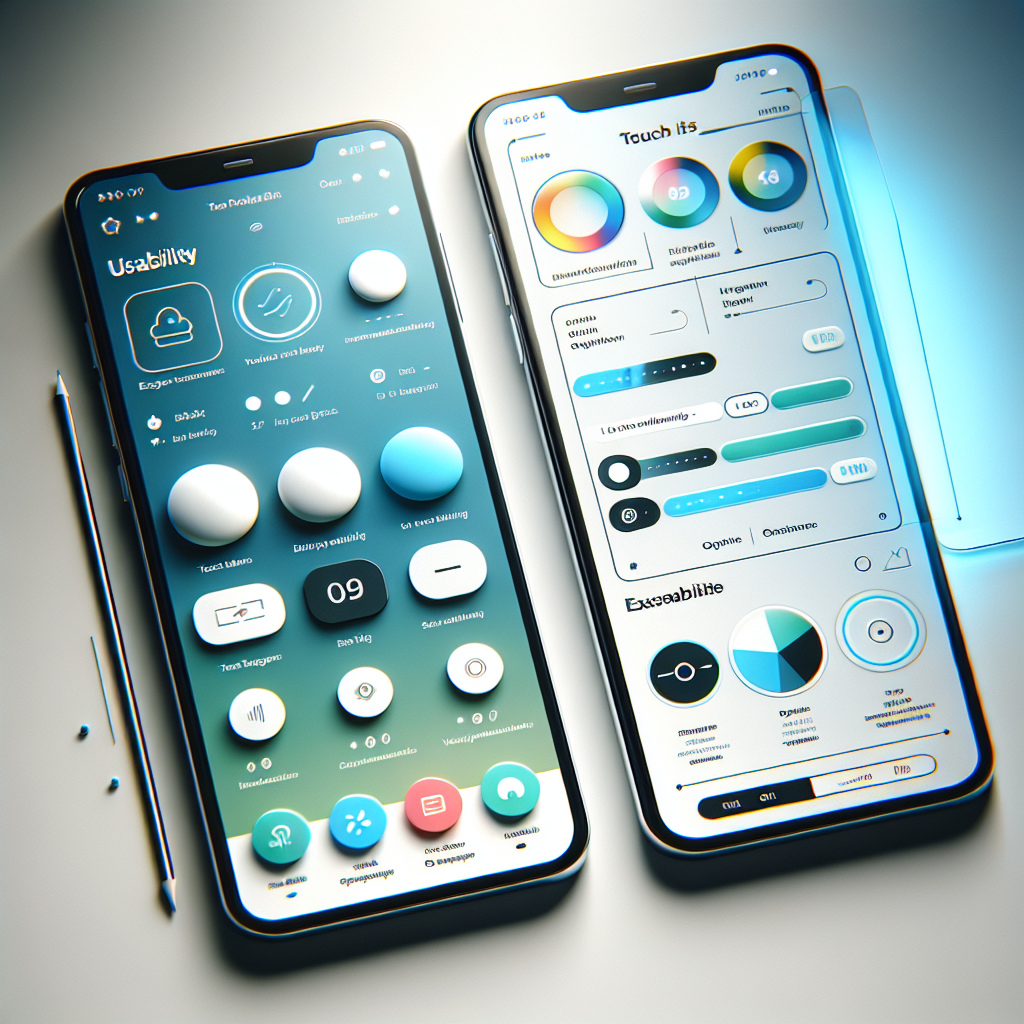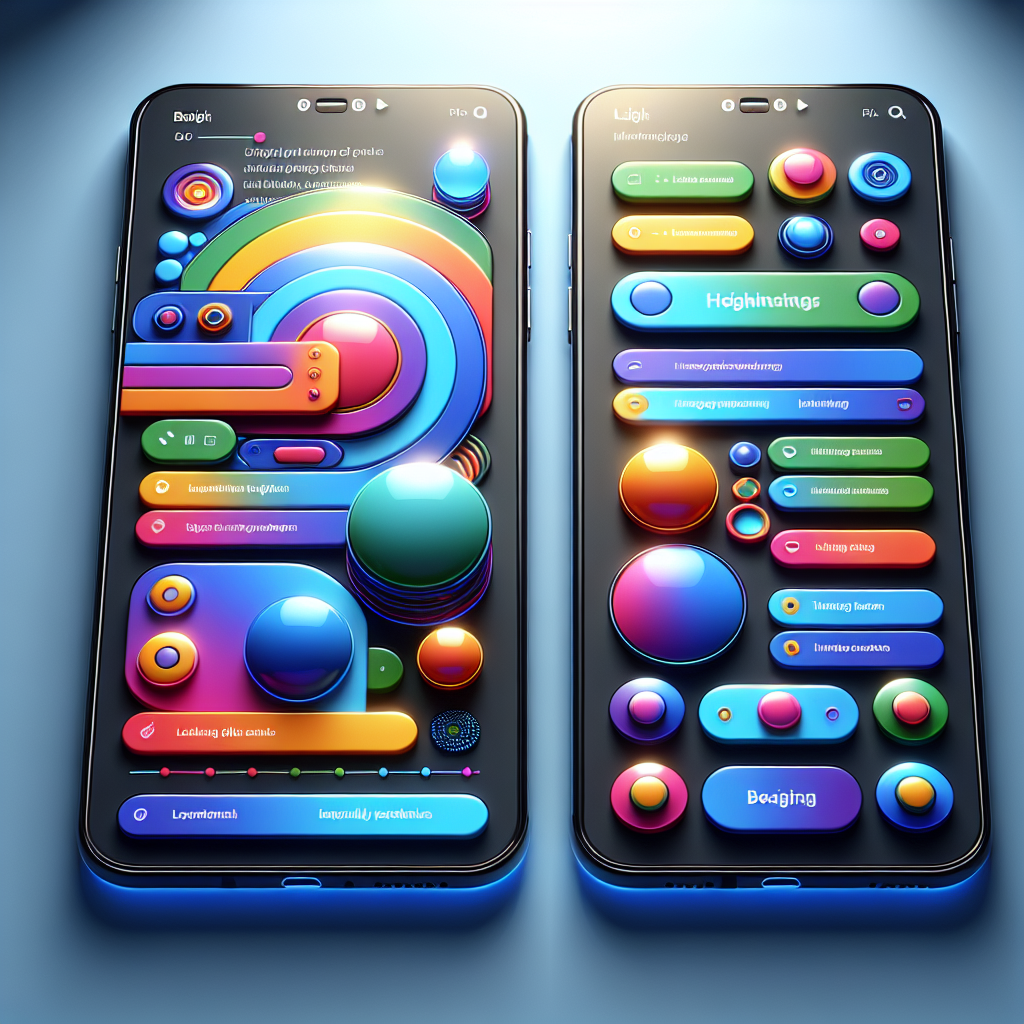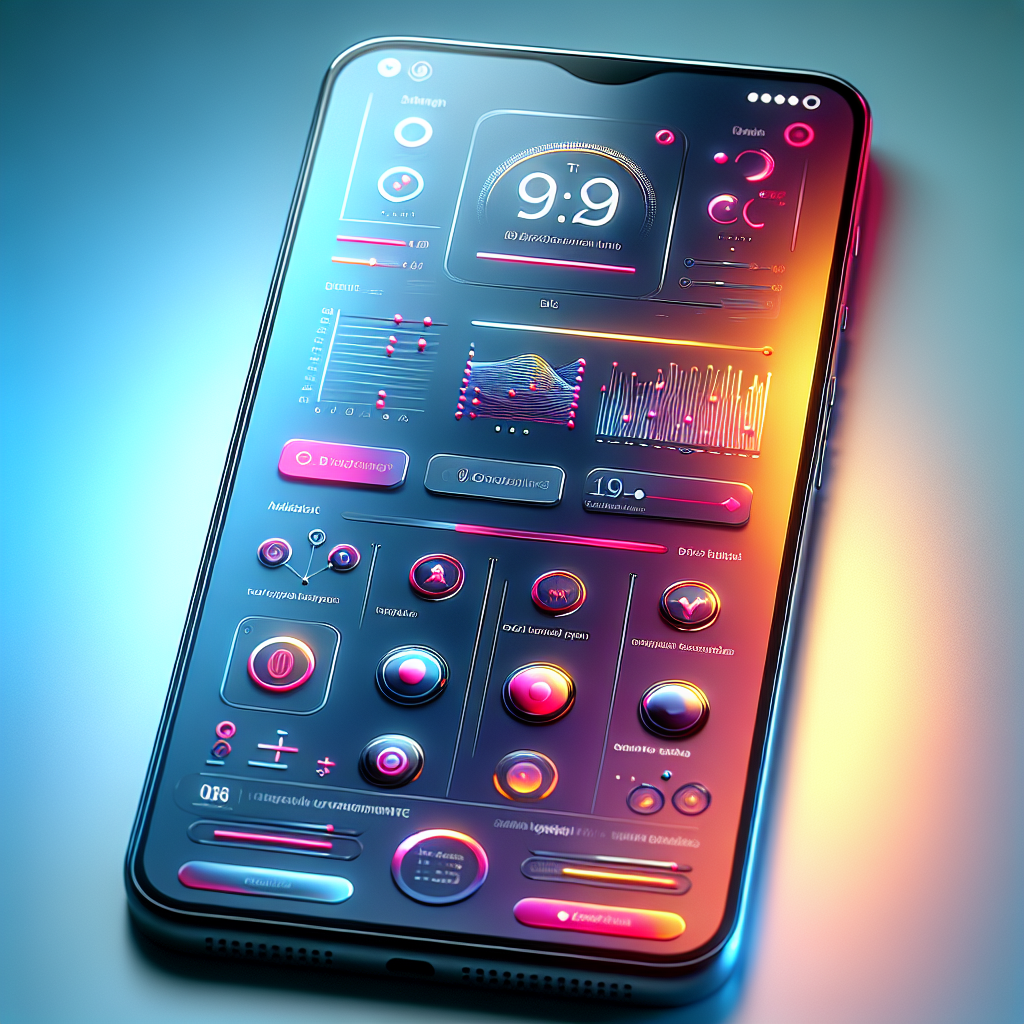In the realm of mobile application development, understanding the concept of a mobile interface is crucial for creating a user-friendly experience. A mobile interface refers to the point of interaction between the user and the mobile application, encompassing all the elements that users engage with on their devices. This includes buttons, icons, menus, and other visual components that facilitate navigation and functionality.
At its core, a mobile interface should prioritize usability and accessibility. The design must cater to users’ needs, making it easy to perform tasks and access information. Here are some key components that play a vital role in mobile interface design:
- Visual Hierarchy: Organizing elements in a way that guides users’ attention and enhances navigation.
- Touch Targets: Ensuring buttons and interactive elements are sized appropriately for easy tapping.
- Feedback Mechanisms: Providing users with immediate responses to their actions, reinforcing interactions.
- Consistency: Maintaining uniformity in design elements to establish familiarity and trust.
With these components in mind, mobile interfaces can significantly enhance user satisfaction and engagement. As mobile usage continues to grow, mastering the intricacies of mobile interface design becomes increasingly important. Book A Consultation Now! to delve deeper into how you can create effective mobile interfaces for your applications.
Importance of Mobile Interfaces in App Development

The importance of mobile interfaces in app development cannot be overstated, as they serve as the primary touchpoint between users and applications. A well-designed mobile interface is essential for several reasons:
- User Experience: A clear and intuitive interface enhances user experience, making it easier for users to navigate through the app and accomplish their goals. A positive user experience fosters loyalty and encourages users to return to the app.
- First Impressions: The mobile interface is often the first interaction a user has with an app. A visually appealing and functional interface creates a favorable first impression, which can significantly influence the user’s decision to continue using the app.
- Accessibility: A thoughtfully designed mobile interface ensures that users of all abilities can access the app’s features. This inclusivity broadens the app’s audience and improves overall user satisfaction.
- Competitive Advantage: In a crowded app market, having a standout mobile interface can differentiate an app from its competitors. A unique and engaging interface can attract more users and enhance its marketability.
Ultimately, mobile interfaces play a pivotal role in the success of an app. By prioritizing usability and design, developers can create applications that not only meet user expectations but also drive engagement and retention.
Key Components of a Successful Mobile Interface
Understanding the key components of a successful mobile interface is crucial for developers and designers aiming to create engaging applications. These components work together to ensure usability, accessibility, and overall user satisfaction. Here are the essential elements:
- Navigation: A clear and intuitive navigation system allows users to move easily within the app. This includes menus, buttons, and gestures that help users find the information they need without confusion.
- Visual Hierarchy: Effective use of visual hierarchy guides users’ attention to the most important elements on the screen. By utilizing size, color, and contrast, designers can prioritize information and actions, making it easier for users to interact with the app.
- Feedback Mechanisms: Providing feedback through visual cues, sounds, or haptic responses is essential for informing users about their actions. For instance, a button press should be visually acknowledged, enhancing user confidence in the app’s responsiveness.
- Consistency: A consistent design across all screens helps users familiarize themselves with the app quickly. This includes uniform colors, fonts, and button styles that create a cohesive experience.
- Accessibility Features: Incorporating accessibility features, such as adjustable text sizes and voice commands, ensures that all users, including those with disabilities, can enjoy the app’s functions.
Incorporating these key components into mobile interface design can significantly enhance user engagement and satisfaction, ultimately contributing to the app’s success in a competitive marketplace.
Design Principles for an Effective Mobile Interface

Implementing effective design principles for a mobile interface is fundamental to creating applications that are not only visually appealing but also user-friendly. Here are some core principles that should guide the design process:
- Simplicity: The principle of simplicity emphasizes minimalism in design. A clutter-free interface allows users to focus on essential tasks without distractions. Each element should serve a purpose and contribute to the overall user experience.
- Touch-Friendly Design: Given that mobile devices rely on touch input, elements must be appropriately sized and spaced. Buttons should be large enough to tap easily, and touch targets need to be well-placed to prevent accidental clicks.
- Responsive Design: A successful mobile interface adapts well to various screen sizes and orientations. This requires a flexible layout that adjusts seamlessly to different devices, ensuring a consistent experience for all users.
- Color and Typography: The effective use of color and typography enhances readability and visual appeal. Selecting a complementary color palette and using clear fonts can greatly improve user engagement, while also conveying the app’s brand identity.
- Contextual Relevance: Design should consider the context in which the app will be used. Features like location-based services or personalized content can enhance user experience by providing relevant information at the right time.
By adhering to these design principles, developers and designers can create mobile interfaces that not only attract users but also facilitate easier navigation and interaction, leading to higher user satisfaction and retention.
How Mobile Interfaces Enhance User Experience

The design of mobile interfaces plays a pivotal role in enhancing user experience. As users increasingly rely on mobile applications for daily tasks, a well-optimized interface becomes essential. Here are several ways mobile interfaces elevate user experience:
- Intuitive Navigation: Mobile interfaces often employ simple and intuitive navigation structures, allowing users to find what they need quickly. Features like hamburger menus and tab bars provide easy access to different sections of the app, minimizing the time spent searching for information.
- Personalization: Mobile interfaces can offer personalized experiences based on user behavior and preferences. Customizable settings allow users to adjust layouts, themes, and notifications, making the app more relevant to their needs.
- Visual Feedback: Providing immediate visual feedback on user actions enhances engagement. For instance, animations, color changes, or sounds can signal successful actions, such as sending a message or completing a form, creating a more interactive experience.
- Accessibility Features: Well-designed mobile interfaces incorporate accessibility options, ensuring that users with disabilities can navigate the app effectively. Features like voice commands, screen readers, and adjustable text sizes promote inclusivity.
- Faster Load Times: Efficient mobile interfaces are optimized for speed, reducing load times and improving overall performance. Users are less likely to abandon an app that responds quickly to their inputs.
Incorporating these elements into the design not only makes the app more enjoyable to use but also encourages users to return, thereby increasing retention rates and overall success in a competitive market.
Best Practices for Creating Mobile Interfaces

Creating effective mobile interfaces requires a blend of creativity, usability, and strategic planning. To ensure that your app stands out in a crowded marketplace, consider the following best practices:
- Prioritize Simplicity: A clean and straightforward design reduces cognitive load. Avoid cluttering the interface with unnecessary elements that may distract users from their primary tasks.
- Consistent Design Language: Maintain consistency in colors, fonts, and button styles throughout the app. This cohesion helps users intuitively understand how to interact with different features.
- Touch-Friendly Elements: Ensure that buttons and interactive elements are appropriately sized for touch. A good rule of thumb is to make touch targets at least 44×44 pixels to accommodate users’ fingers comfortably.
- Responsive Design: Design interfaces that adapt to various screen sizes and orientations. This flexibility ensures a seamless experience across different devices, from smartphones to tablets.
- Conduct User Testing: Regularly testing your interface with real users is vital. Gather feedback to identify pain points and areas for improvement, allowing you to refine the design based on actual user experiences.
By adhering to these best practices, you can create mobile interfaces that not only meet user expectations but also enhance engagement and satisfaction. If you’re ready to take the next step in developing a successful mobile app, Book A Consultation Now! and let our experts guide you through the process.
